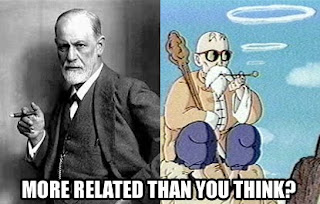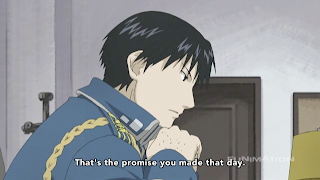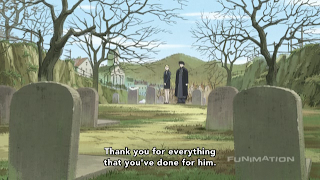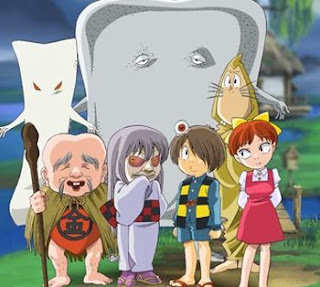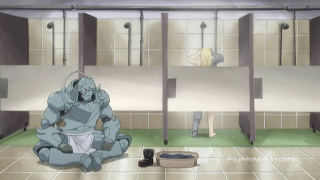Ani-Gamers staff writer Ink contributes a weekly column in which he examines the differences between the original Fullmetal Alchemist and its re-telling, Fullmetal Alchemist: Brotherhood. To read previous entries, click here.
Watch Episode 33 - The Northern Wall of Briggs
Kimblee gets some character development through working with the Armestrian army. No longer FMA1’s explosives-obsessed alchemic liability, Kimblee is a skilled tracker...or at the very least endowed with a balance of intelligence and psychopathic intent well suited towards his officially assigned duty of tracking Scar. FMA1’s Kimblee was more/less an anarchistic bombardier charged with unsettling nations and creating scapegoats for the homunculus-led Armestrian military after being reabsorbed within their ranks via Archer. Later, Kimblee was transformed into a bit of a ridiculous monstrosity via automail, a shell of his former being. FMA2 pulls off a more subtle Kimblee (as subtle as one can be in an all-white suit) tuned for the role and more believable as a psychopathic hunter/assassin by way of attention to his eyes and obsession for his duty.
Speaking of Kimblee, the match-up between alchemic talents of him and Scar and is a rather brilliant one. Both are demolition specialists (a talent of Scar’s to which Kimblee almost admits something akin to admiration for during an earlier scene) and require hand-to-hand combat for the final blow. Of course, Kimblee has a philosopher’s stone, so range isn’t actually an issue, but we also know Scar’s degree of aggression, so we also know it’s going to be a fury-filled, close-range battle despite any ranged attacks. The end to this fight will surprise you, might make you laugh, but take it as it is and you will find a brilliantly executed battle that has almost no action. Not to say that all battles should be thusly matched. A, this is not a Street Fighter tournament, and B, it’s not realistic to have only foils battle each other. However, the foil battle does give greater meaning or at least greater suspense to the endless battles that comprise FMA2.
Though the animation of characters still leaves much to be desired, the direction is as impressive as ever. It’s the little things, like the reality of a train operator looking back because of an odd sound and inconsistent rumbling and not being able to see anything out-of-the-ordinary. Only after a pair of train tracks are shown bending to the right on a gradual curve in the snow does the operator notice half the train has disappeared. It’s a small attention to detail, but that’s what’s always made FMA1 a great series, and FMA2 continues the tradition well.
Maintaining a contrast with FMA1, FMA2’s Marcoh still isn’t dead. Due to his Scar-inflicted makeover and Akehestric healing performed by Shao May, though, he does have a new face. I like that Marcoh’s made to suffer whenever we see him, but he still doesn’t seem as tortured as his FMA1 counterpart. It just seems as though he’s adjusting, comfortable with how he’s helping, which goes against the “it’s the least I can do” mentality of FMA1’s Marcoh.
And the last major difference in this episode is the discovery of Scar’s brother’s research, which was a blend of alkahestry and alchemy and was never really used (or explained) in FMA1. After Scar imparted a tattooed limb to his sibling, his brother became more emotional motive than didactic plot. This will most likely serve as the bridge by which Ed & Al learn alkahestry, as they are searching for Shao May, who is traveling with Marcoh and has just dug it up near the north where Ed and Al are currently.
On the new characters front, we meet Armstrong’s older sister – a general in charge of the North City fort, Briggs – as well as some army special forces officers and grunts. Additionally, the preview revealed what looked to be a new homunculus working for (or being used by) the military.


 News
News Reviews
Reviews Features
Features Columns
Columns Podcast
Podcast
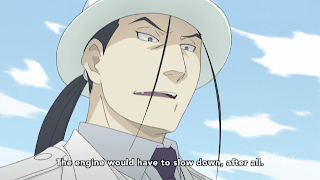
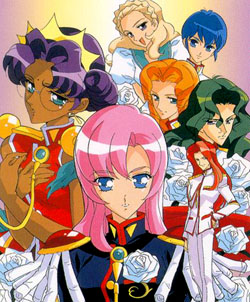




![Cosplayers at the third annual third China International Cartoon & Animation Festival [Reuters]](https://blogger.googleusercontent.com/img/b/R29vZ2xl/AVvXsEijq7T91cy1f5-3SwkNpQEN-KkJk7dDzUk2MVLf938HrFaE6BxKgTCdfemoAIBHHGmDSaBHn0owkpD3RnbfNfaWZ3K6nCwgt6EJwIQuY6dXlbtMpXRX5V3vD0Lc9U3_sVDHjpxnbDjXVrY/s320/CICAF.jpg)

